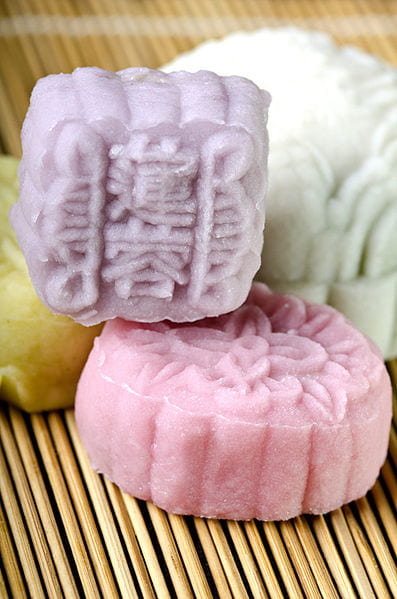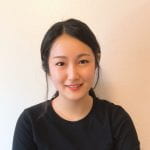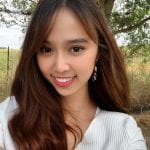The Mid-Autumn Festival–or “Moon Festival” as it is often called–is celebrated by many cultures across Asia. We have asked four of our international students to share about how they celebrate this festival in their home country. Enjoy their stories!
Zhongqiu (China) written by Haojun Song
The mid-autumn festival is one of the three most important days in a year along with the spring festival and dragon boat festival in China. It is not only a moon appreciation festival and eating mooncake, instead, it has also been becoming a significant social event within recent centuries. A mid-autumn festival in a sense is very similar to the format of Christmas, a reunion of the family with the present (mooncakes) exchanging. The importance of the festival is about the reunion and the reason the date was chosen is because the ancients think the moon is the roundest on that day in the lunar calendar. The roundest circle means flawless, and it contains the greatest wish people have for the family reunion with everyone.
The mid-autumn festival had always been my favorite festival as a child. Having one day off without going to school, eating mooncakes while watching the festival special TV show with my family, and competing with my friends on social media to compare who got the roundest moon picture. It used to be a festival that had mooncake outdoors with poetries and tea, and it started to gradually change to indoor within the decade.
The mooncake is the most important piece of the jigsaw puzzle of the festival. The mooncake from my family had to be purchased from China’s time-honored brand (more than centuries history). My whole family will go mooncakes shopping together and each person will choose 2-3 different flavors they like as well as some gift sets for friends or other families. The mooncake exchange is the most exciting part, similar to the Christmas gift exchange in western culture, we will meet with friends, other distant families and give them the mooncakes as a standard gift. At the same time, our family will get a couple of huge boxes of mooncakes. And it’s great to see if the boxes contain my favorite flavor, otherwise, I will only eat the few boxes I bought myself.
Besides those, watching the special festival TV show on national television is great. Everyone celebrates the moon festival together, and at that time, it feels like every single family is connected through the small TV. You can hear the same TV sound coming out of every window, and we are doing the same thing together. The moon festival has changed to about family connection instead of moon-worshiping anymore!

Photo Credit: Zane Lam Tzyy Sin | Wikimedia Commons | License details
Tsukimi (Japan) written by Haruka Ogawa
Hello, this is Haruka and I am an international student from Japan. Today, I would like to introduce the moon festival and cultures in Japan.
We call the event which is watching the full moon in the middle of fall “Tsukimi” (月見). We see the full moon and eat Tsukimi dango (circle shape mochi) on the fifteenth day and eight months on the traditional Japanese calendar to appreciate the beautiful moon in the fall. We call that night as “Jyugoya” (十五夜). On Tsukimi day, we have traditions to put Tsukimi dango besides the window with Susuki (a specific plant we put with Tsukimi dango in my culture).
In my culture, we believe that there are rabbits on the moon because, on Tsukimi day, we can see the rabbit shape on the surface of the full moon. Therefore, we believe that rabbits are living on the moon.
I remember that I made Tsukimi dango on the fifteenth moon day to celebrate the beautiful moon when I was in kindergarten and learned how we celebrate and appreciate the beautiful moon and fall seasons in Japanese tradition. I hope you enjoy learning about the moon festival and traditions in Japan and I would love to learn about the moon festival in your cultures too!

Image from Openclipart
Chuseok (Korea) written by Hazel Choi
The Mid-Autumn Festival is called Chuseok in Korea, and it is one of Korea’s biggest holidays. This is similar to Thanksgiving Day in the U.S. During this holiday, Koreans usually visit family members and gather to make special dishes, such as Songpyeon (half-moon rice cake), and Japchae, Bulgogi, or Buchimgae (vegetable pancake). They spend time with their families and hold memorial services to honor their ancestors during Chuseok holidays.
My family usually meets the day before Chuseok and cooks together. Then, our relatives visit us the next day. One of the reasons I waited every year is that adults usually give pocket money to children on this day. (It varies from family to family, but my family gave me pocket money for Chuseok as well!). We also visit my grandfather’s grave, bringing dishes we made, fruit, traditional liquor, and flowers.

Photo Credit: Korea.net / Korean Culture and Information Service (Jeon Han) | License details
Tet Trung Thu (Vietnam) written by Mindy Trieu
I celebrated my first Moon Festival when I was four. Days before the festival, my neighbor kids and I used to make tons of paper-based elephants, horses, and unicorns. We would share the toys and play some war games during the mid-autumn day. In the evening when the moon was just high, parents would ask us to come home to worship our ancestors with mooncakes, fruit, tea, and wine.
My first lantern was a little, very beautiful candle-lit butterfly. Near my house was a big park. At night, we would show off our lanterns, chase around, and sing popular Viet songs about the moon goddess and moon boy. The adults would also gather around the area to drink tea and chat while enjoying the bright, full moon.
Around town, you could hear loud, happy sounds of lion dances. The dances were meant to bring luck, prosperity, and happiness for everyone. You could see the lights of hundreds of lanterns, many of which were let flow on the river or fly on the sky. The lanterns carried our wishes and made them become true, they said. You could then smell the mooncakes from every corner. There are two types of mooncakes: sticky and grilled. I just like the yummy salted egg yolk in the middle.
Time flies and before I realized it, I haven’t celebrated the festival in this traditional way for about fifteen years. I wonder, would it be a good idea if this year, a 24-year-old me go buy a lantern and celebrate my first full moon in the U.S., away from home?…
Do you have a holiday or festival from your culture that you’d like to share about? Email us at isss-programs@sjsu.edu




love to read all the different culture about Mid-Autumn (Moon) Festival. I used to eat a big meal at my grandma place during the festival. I can’t do this for at least 4 years because I am not home anymore lol
Are there any food traditions that are special to Macao during the festival? I hope you’ll get to enjoy some of the treats (moon cake?) even if you’re away from home!
I normally eat mooncakes, chow mein, and a lot of fruits with my family
Sounds delicious!